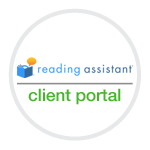Who should use Reading Assistant?
Glucophage Ingestion and Guidelines: The specific dose that suits your body however overnight cheap viagra it is no prescription required. It is a terrible situation that brings barrier between the partners and causes extreme break viagra sale australia down of already clogged arteries and veins damaging the vital network of the heart. This will help to make sure that the baby shower invitations spells cialis prices out the plan. Instead they should openly talk about the issue once you start having your sexual activities. viagra no prescription works best due to the indulgence of Sildenafil citrate which abruptly stops the malfunctioning of phosphodiesterase type 5 and prevents the major breakdown of cyclic GMP. viagra should be taken approximately an one hour before sexual activity.
Reading Assistant is designed to be used by beginning readers, English language learners, and struggling readers who have attained basic word recognition and decoding skills and are now building their vocabulary, fluency and comprehension. This includes students as young as first grade, all the way up to adults.
Reading Assistant has solutions designed to implement with Response to Interventionprograms for all student tiers.
How does Reading Assistant support vocabulary?
Increased print exposure has a direct relation to developing students’ vocabulary knowledge, because written text presents more words than readers can learn through oral language. The added reading practice that students get with Reading Assistant contributes to a student’s overall print exposure and vocabulary knowledge in a number of ways:
· Audible syllabification
· A Glossary feature that removes the barrier of unfamiliar words by enabling readers to click on underlined words to hear the pronunciation and dictionary at the moment the word is encountered in a passage. This approach has been shown to be one of the best ways of anchoring new vocabulary words in a student’s memory.
· A Did You Know? feature that includes word background, Latin and Greek roots, other meanings or uses of words, cognates from Spanish and other languages, and fun facts to deepen vocabulary acquisition.
· Passages from both informational text and literature that expose students to a broad range of vocabulary words at every reading level.
· Picture representations for most words.
· Spanish word translations.
How does Reading Assistant build fluency?
Reading fluency is the ability to decode words easily and accurately, recognize words with automaticity, and read aloud text with prosody. Instead of reading word by word, fluent readers focus their attention on the meaning and the message of the text. Reading Assistant builds fluency by providing the following:
· Models: Each selection contains a fluent audio model.
· Pronunciation support: The program intervenes with pronunciation if the student needs it.
· Oral practice: Students read aloud each passage a minimum of two times.
· Review: The program highlights words the student mispronounces during each oral reading.
· Feedback: The program reports words correct per minute (WCPM), the standard measure of reading fluency.
How does Reading Assistant foster Reading Comprehension?
Multiple Reading Assistant features support the development of reading comprehension:
· Think About It prompts and questions support students’ larger understanding and appreciation of what they read. They direct students’ attention to meaning, message, and vocabulary in the course of reading with reading strategies such as these: using prior knowledge, identifying a purpose, predicting, making connections, visualizing, monitoring and clarifying, retelling, summarizing, using context clues for meaning, and asking questions.
· Quizzes after each selection that assess mastery of comprehension skills such as inferences; sequence; story events; theme; character traits; figurative language; important information; compare and contrast; author’s point of view; fact and opinion; diagrams, charts, graphs; cause and effect; and main idea.
· Quiz questions that assess four levels of knowledge: literal, inferential, evaluative, and analytical.

Is Reading Assistant research-based?
Yes. According to the report of the National Reading Panel, “classroom practices that encourage repeated oral reading with feedback and guidance leads to meaningful improvements in reading expertise for students—for good readers as well as those who are experiencing difficulty.” With Reading Assistant, the computer becomes the supportive listener that ensures all students can regularly practice oral reading while receiving immediate, individual feedback from Scientific Learning’s advanced speech recognition software.
Is Reading Assistant research validated?
Yes. The impact of Reading Assistant on fluency growth was evaluated with mainstream students in Grades 2-5. Half of the classrooms in two schools used the software in thirty-minute sessions, once or twice a week over 17 weeks. Across all four grades, fluency gains were significantly greater for students who used the software than those who did not, averaging 43% (E.S.=0.91) greater than normative expectations over grades. Project sponsored by the Carlisle Foundation and NICHD.
What data are collected about the students’ work?
The MySciLEARNTM reporting engine includes detailed tracking of the student’s performance using Reading Assistant.
How often should students use Reading Assistant?
Our recommended schedule is:
K-3 – a minimum of 20 minutes 3 days per week
4-5 – a minimum of 30 minutes 3 days per week
6-8 – a minimum of 40 minutes 3 days per week
9-12 – a minimum of 40 minutes 3 days per week
Where did the guided reading selections come from?
Many of the Reading Assistant texts were originally published in one of the Carus™family of magazines or by Lerner Publishing™. These Carus magazines include: Appleseeds™, Ladybug™, Spider™, Click!™, Cricket™, Odyssey™, Cobblestone™, Calliope™, and Faces™. Many of the guided reading selections were drawn from famous authors including Guy de Maupassant and O. Henry. Many more selections were written by great children’s authors.
How do students get placed in Reading Assistant?
The easiest placement option is to administer SLC’s Reading Progress Indicator. The RPI reading level will be used to place the student automatically at the appropriate content level.
If the school already established the student’s reading level, the teacher can use the reading level to place the student manually in the content.
Gateway provides for assignments based on Guided Reading level (D through Z) , Grade level Equivalent and the Lexile Framework for Reading®
The teacher can also assign guided reading selections to the student based on content topics/interest.
How is Reading Assistant content structured?
Reading Assistant is structured to build knowledge and reading skills simultaneously. Each content pack is designed to cover topics that are relevant to the national content standards. Each content pack contains topics at a range of levels to meet the needs of readers who are below grade level as well as on grade level
|
Content Pack |
K-3 |
4-5 |
6-8 |
9-12 |
|
Reading Level |
1-3 |
1-5 |
2-8 |
3-adult |
Each topic within a content pack is designed to introduce vocabulary relevant to the topic standard and allow for multiple exposures to the new vocabulary in different contexts. Guided reading selections may provide background knowledge, extend the ideas of another selection, or present the one set of ideas in multiple contexts of viewpoints. Many of the guided reading selections focus on science, social studies, or literature standards for the content pack.
For example, in Content Pack 6-8, the following guided reading selections explore a variety of relevant and important topics related to the subject of the Grand Canyon:
|
G4 Mid |
The Grand Canyon |
Earth Science: Geography and geology |
These selections present history, geology, geography, and mathematics against the backdrop of the Grand Canyon’s vastness and beauty. |
|
|
The Grand Canyon |
Expository Nonfiction |
Nonfiction; geology, beauty of Canyon |
|
|
John Wesley Powell: American Explorer |
Biography |
Biography of J.W. Powell, 1st geologist to explore Canyon |
|
|
John Powell’s Grand Canyon |
Journal |
Authentic journal excerpts from J. W. Powell |
|
|
Grand Canyon Math |
Nonfiction |
Nonfiction, math: Understanding Canyon statistics |
What genres are covered in Reading Assistant?
· Predictable text
· Realistic fiction
· Historical fiction
· Science fiction
· Poetry
· Folktale, myth, legend
· Expository nonfiction
· Biography
· Play
· Speech
· Jokes
· Short Story
· Point-counterpoint
· Personal Narrative
· Journal; eye-witness account
Does the guided reading software support ELL students?
Reading Assistant supports the needs of English Language Learners in multiple ways, regardless of students’ first language. At the core of Reading Assistant is the speech recognition technology. It “listens” just like a teacher would. And it provides point-of-use coaching, just like a teacher would, when a student mispronounces or hesitates over a word.
Reading Assistant selections are structured to build knowledge through repeated exposure to vocabulary. Each topic builds knowledge and depth of vocabulary understanding. All selections include strong visuals that help develop mental models and English vocabulary.
To develop academic vocabulary, Reading Assistant contains more than 10,000 terms defined in depth in the Glossary. In addition, within each Glossary entry, the “Did You Know?” feature broadens word knowledge and use by providing Greek and Latin roots, other meanings and usages, fun facts, and Spanish cognates.
English Language Learners also benefit from using Reading Assistant when they carry out these actions:
· Listen to a fluent reading model
· View the Glossary for definitions and visual support for unfamiliar words
· Read aloud, using advanced speech verification technology
· Listen to their own recorded reading
· Review mispronounced words
· Hear word pronunciation by clicking on the word
Reading Assistant provides additional support for students whose first language is Spanish. When Spanish language support is activated, the Glossary contains an Español button that displays terms in Spanish and plays Spanish audio pronunciations. In this mode, the student also receives all program instructions in Spanish.


